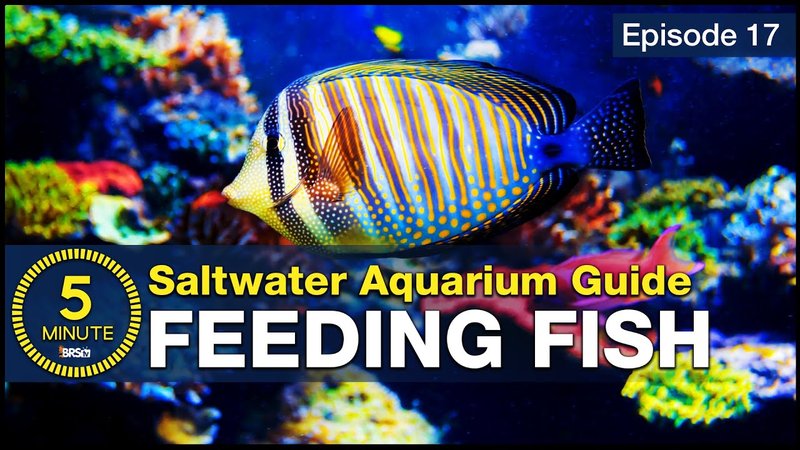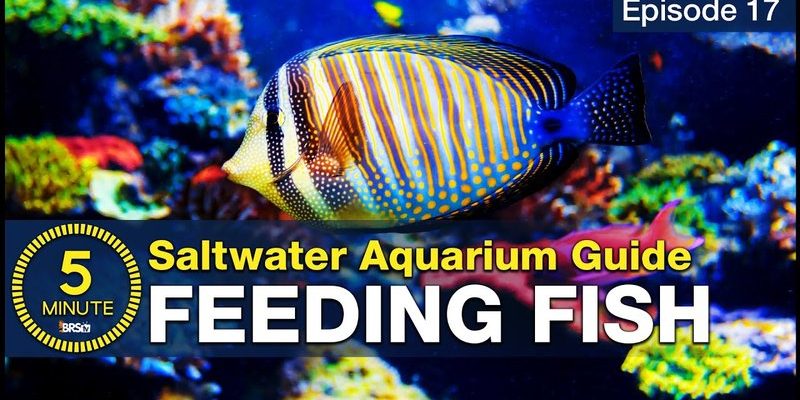
Now, if you’re just starting out, you might feel a bit overwhelmed. There’s a lot to consider, like whether to go with frozen, dry, or live food. Here’s the thing: understanding the basics can make the whole process much easier. In this guide, we’ll explore the best practices for feeding saltwater fish, so you can keep your underwater friends thriving and happy.
Understanding Saltwater Fish Diets
Saltwater fish come from various environments in the ocean, and their diets reflect that diversity. While some are opportunistic feeders, consuming whatever comes their way, others are more selective, like picky eaters at a dinner table. Most saltwater fish fall into three main categories based on their dietary habits: herbivores, carnivores, and omnivores.
Herbivores primarily eat plant material. Think of fish like tangs and parrotfish that graze on algae and seaweeds. They’ll thrive on foods like spirulina flakes, frozen algae sheets, and blanched vegetables.
On the other hand, carnivores, like lionfish and groupers, prefer a meatier diet. They require protein-rich foods, such as shrimp, fish, and other seafood.
Lastly, omnivores, like clownfish and damselfish, will eat a mix of both plants and meat. These fish benefit from a varied diet that includes flakes, pellets, and frozen foods. Understanding your fish’s dietary needs will help you provide a balanced diet that keeps them healthy and happy.
Choosing the Right Food
So, how do you pick the right food for your salty swimmers? You might be surprised to learn that there are several types of fish food available, and each serves a specific purpose. Here’s a breakdown of the main types of food you might consider for your saltwater fish.
- Flakes and Pellets: These are great for everyday feeding and are formulated to meet the nutritional needs of most saltwater fish. Look for high-quality brands that list the ingredients clearly.
- Frozen Foods: These options often include brine shrimp, mysis shrimp, and bloodworms. They provide a more nutritious option that can mimic their natural diet.
- Live Foods: If you’re feeling adventurous, live foods like brine shrimp or blackworms can be an exciting treat. However, they can also introduce unwanted pests into your tank, so approach with caution.
When selecting food, always check the label for essential nutrients like protein, fats, and fiber. This helps ensure a balanced diet. You might be wondering whether to mix different food types? Mixing can be a great way to keep your fish interested and provide a wider range of nutrients.
Feeding Frequency and Portions
You know how every chef has their secret recipe for the perfect portion? When it comes to feeding your saltwater fish, a similar principle applies. Overfeeding can lead to health problems and poor water quality, while underfeeding can leave your fish feeling undernourished.
As a general rule, feed fish 1-2 times a day, offering only what they can consume in about 2-3 minutes. If there’s food left at the bottom of the tank after feeding, you’ve probably given them too much. Here’s a simple way to gauge portions:
- For small fish, a pinch of flakes or pellets usually suffices.
- For larger species, a few cubes of frozen food or a small handful of pellets may be appropriate.
During feeding time, observe how your fish respond. If they seem eager and are consuming the food quickly, you’re on the right track. If they linger or ignore it, adjust your portions or try a different food type.
Maintaining Water Quality While Feeding
Feeding your saltwater fish isn’t just about what goes in; it’s also about what stays in the tank. Fish food can create waste, which can affect water quality over time. Poor water conditions can lead to stress and illness in fish.
To help maintain water quality, here are a few tips:
- Regular Maintenance: Perform regular water changes to keep your tank clean. This means replacing about 10-20% of the water weekly.
- Avoid Overfeeding: Stick to the portion sizes we discussed earlier. It’s better to underfeed than to overfeed.
- Use a Filter: Invest in a quality filtration system that can handle the bio-load of your tank. A good filter will help keep your water clean and clear.
You might also want to consider investing in a gravel vacuum. This handy tool can help remove leftover food and debris from the substrate, ensuring your fish have a clean environment to thrive in.
Recognizing Nutritional Deficiencies
Sometimes, despite our best efforts, things can go awry. Nutritional deficiencies can affect the health of your saltwater fish, leading to issues like poor coloration, lethargy, or even disease. Knowing what to watch for can help keep your fish in top shape.
If you notice your fish’s colors fading or they start to develop white spots or unusual markings, it’s worth considering their diet. Here are a couple of common signs to keep an eye on:
- Color Fading: If your fish lose their vibrant colors, they might not be getting enough of the right nutrients, like carotenoids from certain foods.
- Behavior Changes: If fish become lethargic or start hiding, it may signal they’re either stressed or not eating properly.
To rectify this, you can introduce new foods that offer a broader range of nutrients. Always ensure you’re purchasing high-quality food from trusted brands. A few adjustments can make all the difference.
Choosing the Right Feeding Tools
Just like a good knife is essential for a chef, using the right tools can enhance your feeding routine for your saltwater fish. There are several feeding tools that can make the process easier and more effective.
- Feeding Rings: These can help prevent food from floating away and make it easier for fish to find their meal.
- Fish Feeders: Automatic fish feeders can be a lifesaver if you’re away from home for a while. Just set it and forget it!
- Feeding Spoons: For some larger species, a feeding spoon can help you deliver food directly to their tank.
Using these tools can create a stress-free feeding experience for both you and your fish. It makes the process smoother and can encourage fish to feed comfortably.
Feeding saltwater fish is more than just a routine chore; it’s an integral part of their care and well-being. By understanding their dietary needs, choosing the right foods, and maintaining water quality, you can create a thriving environment for your aquatic friends.
Remember to observe your fish during feeding times, adjust their diet as needed, and regularly assess their health. Ultimately, a balanced and nutritious diet will go a long way in keeping your saltwater fish happy and healthy. Happy feeding!

